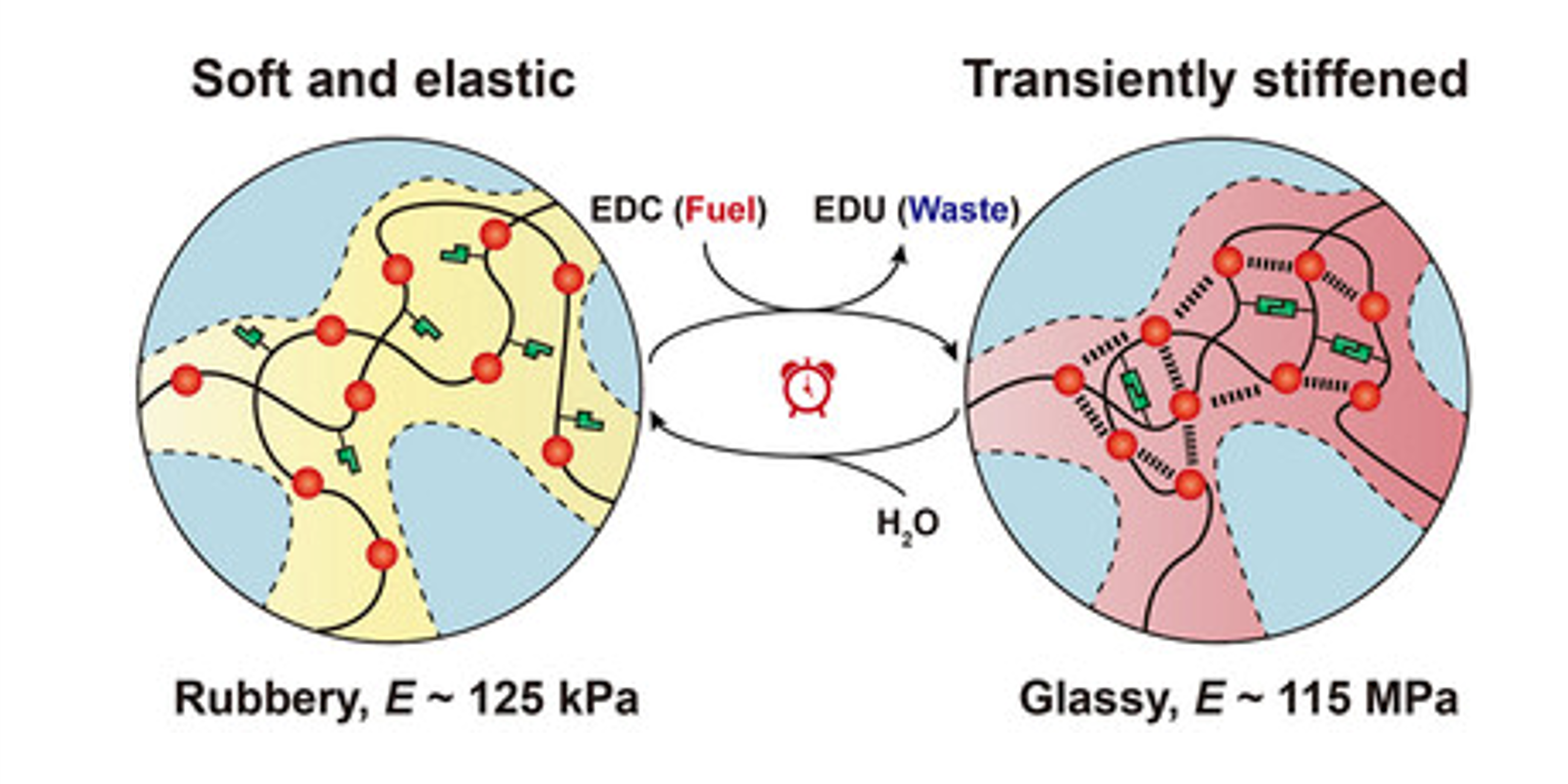Chemical Fuel-Driven Stiffening of Transient Hydrogels via Vitrifiable Phase Separation
Citation
Ying Zhao, Baohu Wu, Shengtong Sun*, and Peiyi Wu*. Chemical Fuel-Driven Stiffening of Transient Hydrogels via Vitrifiable Phase Separation. Angew. Chem. Int. Ed. 2025, 64, e202518064.
Abatract
Fuel-driven transient materials that can temporally adjust their mechanical properties are ubiquitous in living systems, enabling biological functions to be maintained far from equilibrium. While numerous biomimetic transiently stiffened materials have been developed, their low stiffened moduli (typically in the kPa range) severely restrict their practical use in load-bearing applications. Here we report a chemically fueled transient hydrogel that can stiffen into a highly rigid glassy state via vitrifiable bicontinuous phase separation. The hydrogel is made from thermal-stiffening poly(zinc acrylate)-based copolymers, with the stiffening temperature being precisely regulated by the acrylic acid content. Carbodiimide triggers the temporary conversion of carboxylic acids to hydrophobic anhydrides, drastically lowering stiffening temperature and vitrifying polymer-rich phase under ambient conditions. Consequently, the initial soft hydrogel transforms into a transient glassy state, achieving an ultrahigh modulus of 115 MPa and 920-fold modulus increase. This phase separation-mediated dissipative approach significantly enhances the mechanical properties of transient materials with tunable lifetimes.


